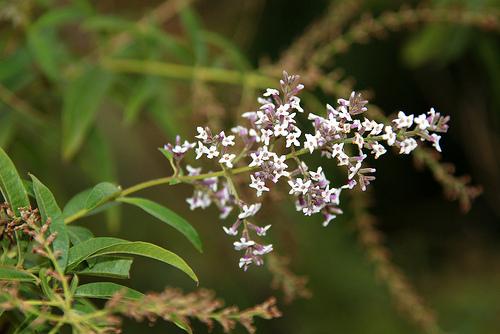Making Tea from Your Garden Plants
By Pat Dickey, Fairfax Master Gardener

Peppermint Tea
When planning your home gardens this winter, you may want to think about adding a tea garden. You will enjoy it, especially if you drink tea instead of coffee, like I do. Your herbs will provide you with flavorings for your black, white and green teas as well as leaves, flowers and roots to use in making refreshing herbal teas. And, you will be able to harvest them just steps away from your kitchen door while enjoying their aroma.
Many herbs and some perennials are well-suited for tea making. Mint leaves and chamomile flowers are the most popular. Lemon balm and lemon verbena leaves will give your tea a citrus taste. Calendula, lavender, rose and violet flowers and ginger root will also flavor your tea, and leaves from the stevia plant will sweeten it. You can also experiment with mixing a few herbs together, such as peppermint leaves, catnip leaves, rose petals and lemon verbena leaves. If you want peppermint to be the dominant flavor, use three parts peppermint to one part of the other herbs. Another mixture uses chamomile with bee balm leaves, and smaller amounts of rosemary leaves, crushed coriander seed and peppermint leaves. If you use fresh herbs, triple the amount you use over the dried herbs. I also like to add black or green loose tea leaves for a hot tea blend.

Bee Balm (Monarda)
Most of the herbs are better planted in containers, since many, especially the mints, will grow large after the first year and take over your gardening space. You could plant them in the garden with your vegetables, annuals, perennials and shrubs, but you will want to keep them from spreading by putting them in old bottomless pots or buckets that you sink about 1 foot into the ground. Herbs grow best in well-drained soil and in full sun, but they won’t require as much attention as your other plants. Do not use chemical fertilizers, herbicides or pesticides on these plants that you will use for your teas.
Plan to harvest your herbs early on a sunny morning after all the dew has evaporated. Don’t cut them back more than to the second set of leaves and use a sharp knife. Encourage the plants to become fuller by making cuts at 45-degree angles. You can harvest herbs anytime throughout the season. However, perennial herbs need time to build up their reserves before winter, so don’t cut any of them later than a month or so before the first expected fall frost.

Lemon Verbena
There are a few different ways to dry flowers and leaves for use throughout the year. You can hang the bunches of herbs upside down to air dry them. First, place them in paper bags pierced with small holes to protect them from dust and to collect leaves as they dry. Then hang the bags in a well-ventilated area, not in a musty basement where they will absorb odors or become moldy. You can also place flowers and leaves to dry on wire screens in a very low heat oven, set around 110 degrees (43º C). Keep the oven door ajar to check them frequently. A microwave can also be used for drying, setting it on low for 60 seconds. Check it and then set it for one-minute intervals, checking after each one until the herbs are almost dry. Then air dry them for one or two days before storage. You should store your dried leaves and flowers in air-tight containers, away from sunlight. Label each container with the name of the herb and the date harvested. They will store well for about one year.
Making your tea requires boiling water. Use one tablespoon of fresh herbs or one teaspoon of dried herbs for each cup of water. Place the leaves or flowers in a tea ball or put them in your teapot of boiling water, cover it and allow it to steep. You can then use a small tea strainer when pouring the tea from the teapot to catch the herbs that you are using. The boiling water is important in destroying any harmful microorganisms that may be in your plants. Experiment how long you want to steep your tea before drinking it. Three to ten minutes is usually enough time. Mints should not be steeped longer than eight to ten minutes, because the tannins in them will give the tea a bitter taste.
Enjoy having a ‘spot of tea’ whenever you wish.
References
• Herb Culture and Use, Shawn Appling and Joyce Latimer, Virginia Cooperative Extension
• Growing Herbs for Tea, Andrea Knepper, Extension Master Gardener, University of Vermont
• Tea Garden, Kate Ryan, Snohomish County, Washington State University Extension
• Herbs: Preserving and Using, M. Bunning, D. Woo & P. Kendall, Colorado State University Extension
…updated 2024